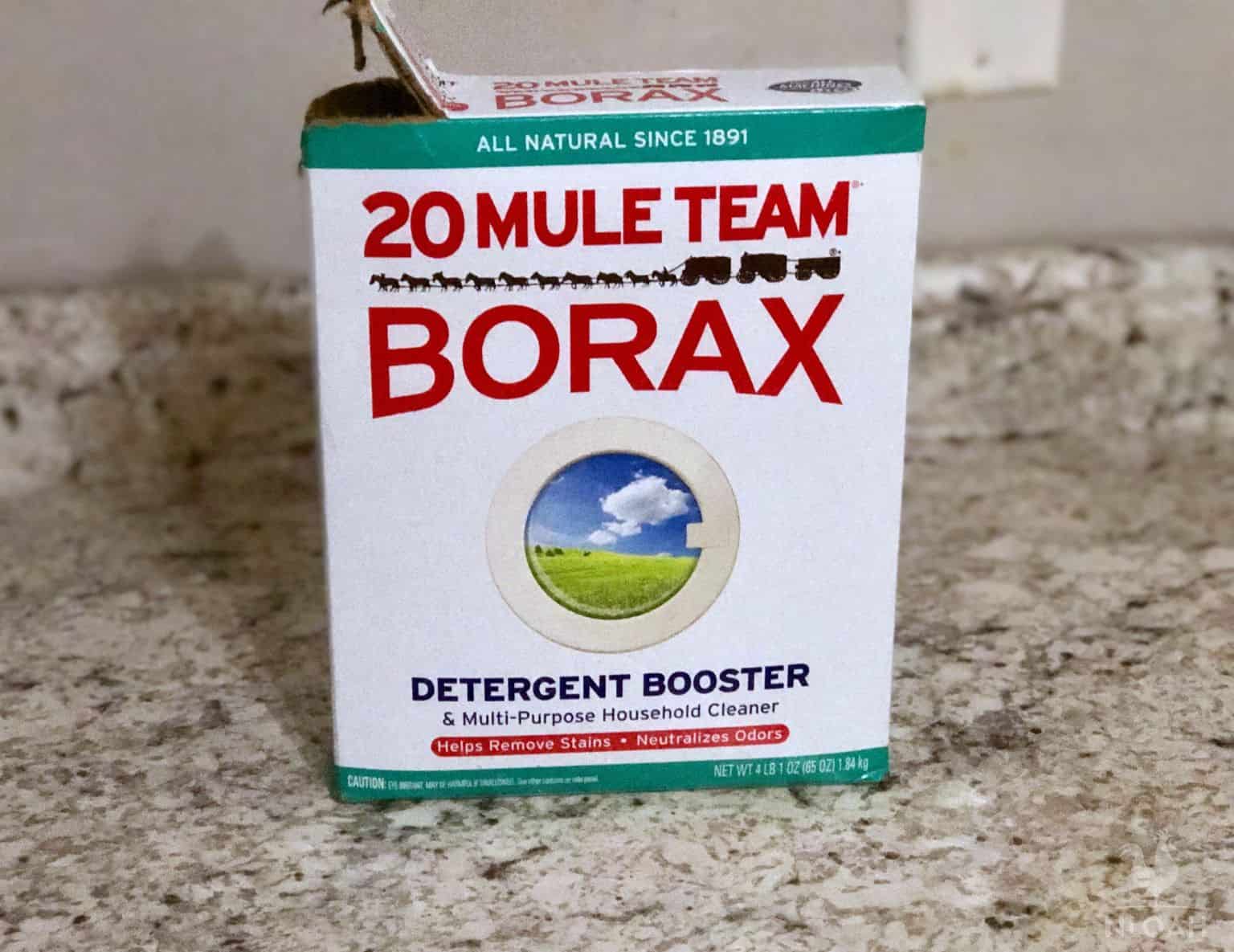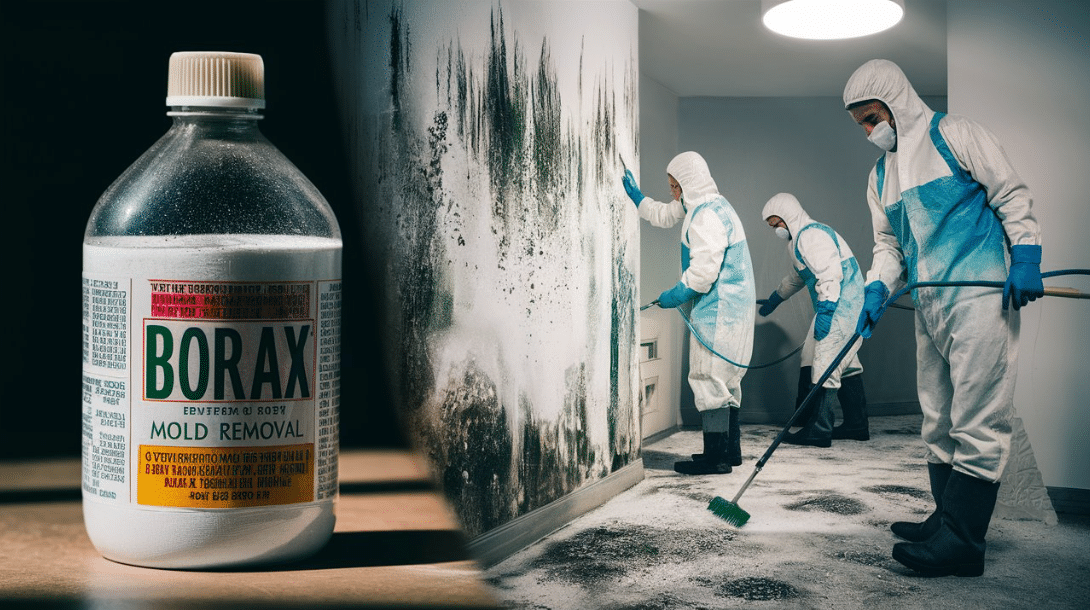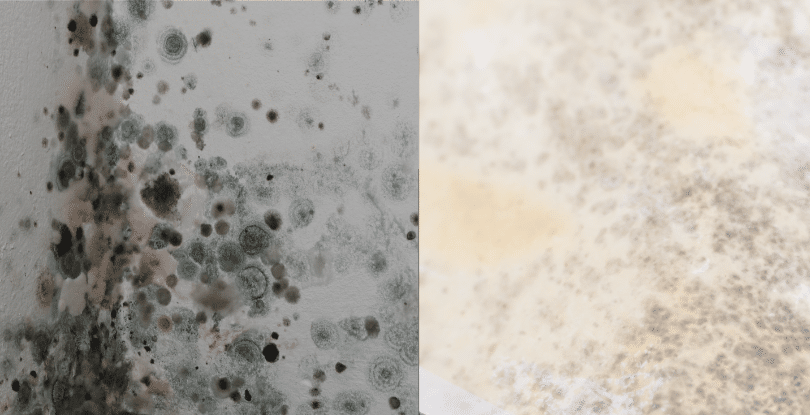Mold is a common problem in many homes, especially in areas with high moisture like bathrooms, kitchens, and basements. Not only does mold make a space look unpleasant, but it can also cause health issues, especially for people with allergies or asthma.
Borax is a natural substance that many people use for cleaning and disinfecting. It’s known for being non-toxic, which makes it a safer choice compared to harsh chemicals. But how effective is Borax at killing mold?
In this post, we’ll look closely at whether Borax can really get rid of mold and how to use it properly to ensure you get the best results. We aim to give you practical advice on using Borax to keep your home mold-free and healthy.
What is Borax?
Borax, also known as sodium borate, is a white powder that has been used for many years in household cleaning and laundry. Its chemical formula is Na2B4O7, and it is naturally occurring. People often use Borax because it helps with cleaning, disinfecting, and even as a mild insecticide.
One of the great things about Borax is that it is non-toxic. Unlike some strong chemicals, Borax does not release harmful fumes, making it a safer option for cleaning. It is also very effective at removing stains and cleaning surfaces.
When it comes to mold, Borax can help get rid of mold and prevent it from coming back. This makes it a popular choice for people who want to handle mold issues without using harsh substances.
Borax vs. Bleach and Vinegar
When comparing Borax with other mold killers like bleach and vinegar, each has its own strengths. Using bleach is very powerful and can kill the mold quickly, but it can also be harsh and may not be safe for all surfaces.
Vinegar is another natural option that can help with mold, but it might not be as effective on stubborn mold problems. Borax offers a balance between effectiveness and safety. It works well on many surfaces and doesn’t have the strong smell or potential hazards that bleach might have.
How Does Borax Kill Mold?
Borax works to kill black mold by affecting the mold spores at a microscopic level. When you apply a Borax solution to a moldy area, it disrupts the mold’s ability to grow and spread. The mold spores cannot survive or reproduce, which helps to stop the mold from coming back.
Scientific Evidence
Studies show that Borax is effective at helping remove mold. For example, research has found that Borax can inhibit the growth of various mold types. While it might not be as fast-acting as some chemical solutions, it provides a strong, long-term solution for mold control.
Limitations of Borax
However, Borax is not perfect for every situation. It may not work well on very porous materials like unsealed wood or severe mold infestations. In such cases, the mold can penetrate deeply into the material, making it harder for Borax to reach and remove it completely.

Step-by-Step Guide to Using Borax for Mold Removal
Before you start removing mold with Borax, it’s important to take some safety precautions. First, put on rubber gloves to protect your hands from the Borax solution. It’s also a good idea to wear a mask to avoid inhaling any mold spores or dust.
Make sure the area is well-ventilated by opening windows or using a fan. This will help keep the air fresh and reduce any strong smells.
Creating a Borax Solution
To make a Borax solution, you’ll need:
- 1 cup of Borax
- 1 gallon of water
In a bucket, mix the Borax with the water until it is completely dissolved. This creates a cleaning solution that can help fight mold.
Application Methods
Pour some of the Borax solution into a spray bottle. Spray the solution directly onto the moldy area. Make sure to cover the entire affected spot with the solution. The spray bottle makes it easier to apply the solution in hard-to-reach places and ensures even coverage.
Scrubbing and Cleaning
After spraying the Borax solution, let it sit for about 10-15 minutes. This gives the solution time to work on the mold. Next, use a sponge or a toothbrush to scrub the area. Scrubbing helps to remove the mold from the surface. For tough spots, you might need to apply a bit more pressure.
Drying the Area
Once you have scrubbed the area, it’s important to dry it completely. Use a clean towel or rag to wipe away any remaining moisture. Mold thrives in damp conditions, so make sure the area is completely dry to prevent the mold from coming back. You might also use a fan or dehumidifier to help speed up the drying process.
Borax Mold Removal in Different Areas of the Home
Here is how to use Borax detergent to remove different types of mold in many areas of the home:
Bathrooms and Tiles
Bathrooms are a common place for mold to grow, especially on tiles and grout where moisture can linger. To use Borax on bathroom tiles:
- Apply the Solution: Spray the Borax solution onto the tiles and grout.
- Let It Sit: Allow the solution to sit for about 15 minutes. This helps it penetrate and tackle the mold.
- Scrub: Use a sponge or a toothbrush to scrub the tiles and grout, focusing on the moldy areas.
- Rinse and Dry: Rinse the tiles with clean water to remove any Borax residue. Dry the area thoroughly with a towel.
Drywall and Porous Materials
Drywall and other porous materials can be more challenging because mold can seep into the material. For these surfaces:
- Test a Small Area: First, test the Borax solution on a small, hidden area to ensure it doesn’t cause damage.
- Apply the Solution: If the test is successful, apply the Borax solution to the affected area.
- Scrub Gently: Gently scrub the area with a sponge. For drywall, be careful not to damage the surface.
- Dry Completely: Ensure the area dries completely to prevent further mold growth.
Wood and Carpeting
Mold on wood and carpets can be tricky. Here’s how to handle these materials:
Wood: Apply the Borax solution to the moldy wood. Scrub with a brush and allow the solution to sit for 10-15 minutes. Wipe off with a clean cloth and let it dry thoroughly. If the mold has deeply penetrated, professional help may be needed.
Carpet: For mold on carpets, spray the Borax solution and gently blot the area with a clean cloth. Avoid soaking the carpet. After cleaning, ensure the carpet dries completely to prevent mold from returning.
Alternatives to Borax for Mold Removal
If you’re looking for other non-toxic options, consider these alternatives:
Tea Tree Oil: Mix a few drops with water and spray on moldy areas. It has natural antifungal properties.
Baking Soda: Sprinkle it on the affected area, scrub, and then vacuum up the residue.
Vinegar: Spray white vinegar directly onto the moldy surface. Let it sit for about an hour before scrubbing.
When to Use Professional Mold Remediation Services
Sometimes, mold problems are too large or severe for DIY methods. If you have extensive mold growth, especially in hard-to-reach areas or on materials like large sections of drywall, it might be best to call in a professional. They have the tools and expertise to handle significant mold issues safely and effectively.
Conclusion
Borax is an effective tool for killing mold. It works by disrupting mold spores, preventing them from growing and spreading. Unlike harsher chemicals, Borax is non-toxic, making it a safer choice for mold removal in your home.
Borax is a practical and effective solution for many mold problems. However, for severe infestations or more complicated cases, professional mold remediation services might be necessary. For expert help in removing mold and ensuring your home stays clean and healthy, call Mold Remediators USA for more information.
FAQs
Does Borax Kill Mold on All Surfaces?
Borax is effective on many surfaces, including tiles and wood. However, it may not work well on very porous materials or in severe infestations. Always test a small area first to ensure it is safe and effective.
Can Borax Prevent Mold from Coming Back?
Borax can help prevent mold from returning by addressing the existing mold and reducing the likelihood of future growth. For long-term prevention, it’s important to control moisture levels and keep areas dry.
Is Borax Safe to Use Around Pets and Children?
Borax is generally considered safe when used correctly. However, it is best to keep pets and children away from the area while you’re cleaning. Always follow safety precautions, such as wearing gloves and ensuring good ventilation, to avoid any potential irritation.




